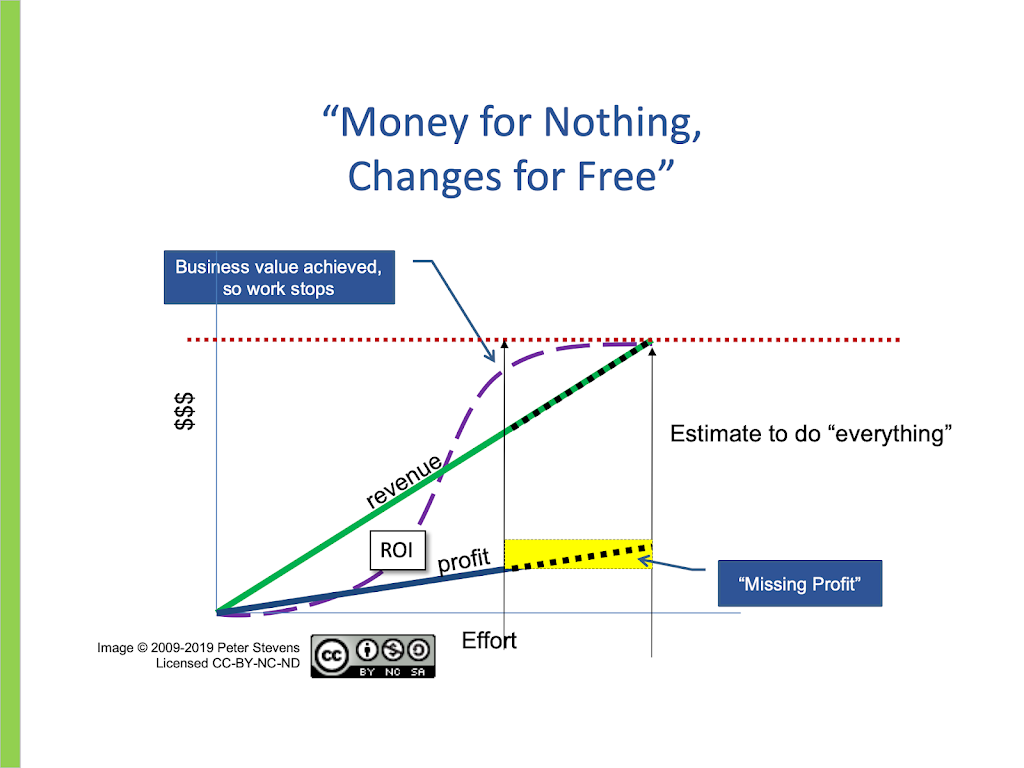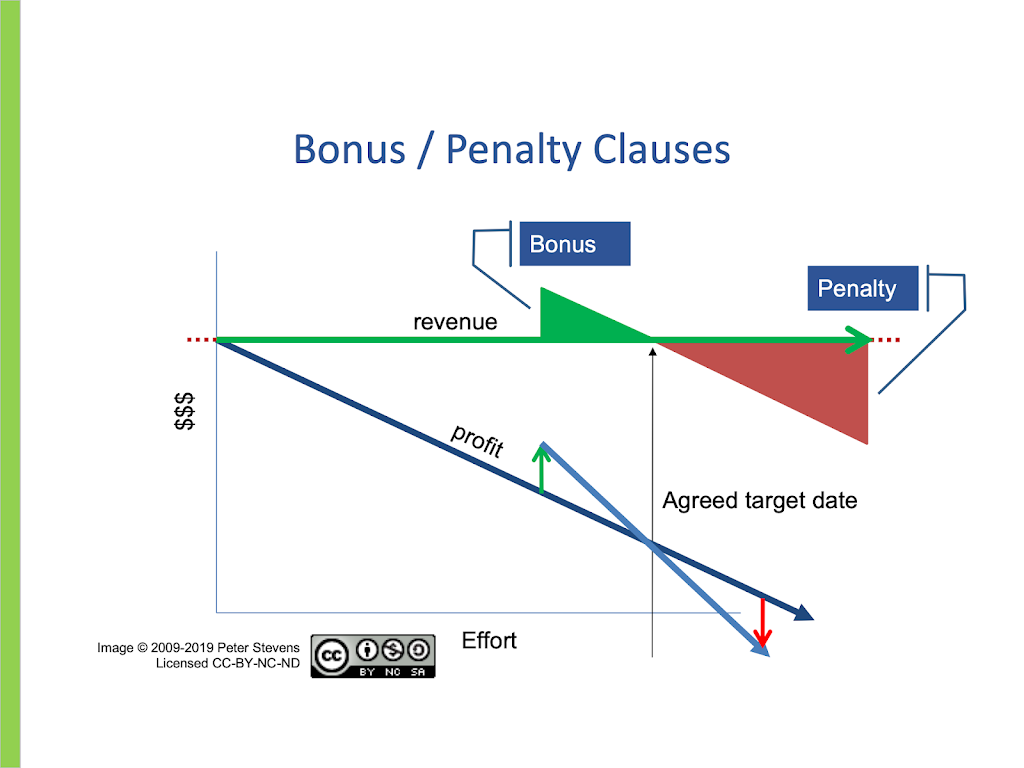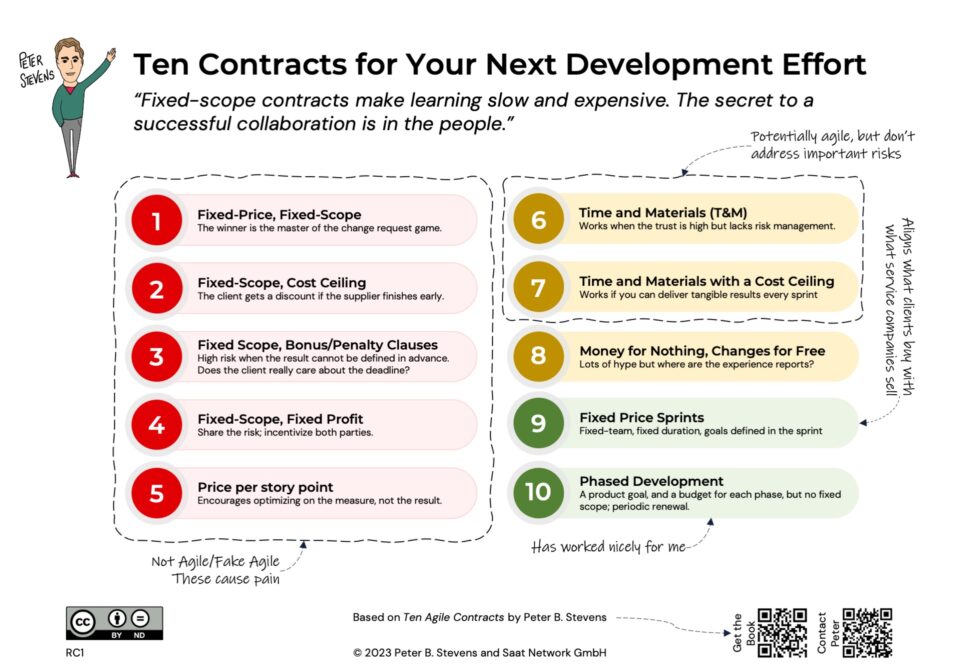Phased Development
12-06-2019
Money for Nothing, Changes for Free
14-06-2019If you are building to a critical deadline, delays might not option. This approach assumes that extrinsic motivations work. If you incentivize people to deliver faster or penalize them to if they deliver late, then they will deliver faster, or so the theory goes.
Desired Benefit
Incentivize the supplier to deliver faster.
Structure
The supplier receives a bonus if the project completes early and pays a penalty if it arrives late. The amount of bonus or penalty is a function of the delay.
Scope Changes
Difficult to accept because changes potentially impact the delivery date, which is surely not allowed.
Risk
Is it more important to figure out the right thing or to build according to specifications? Get the wrong answer and you risk delivering a product that no one wants to use or buy.
Relationship
Could be cooperative but might degenerate into indifferent if the customer does not truly need the result by the date agreed.
Tip
This works best if genuine economic factors encourage the customer to achieve the deadline as well.
While this approach might be appropriate for projects like runways, where scope changes are not an issue, it does not work well in contexts that require creative thinking, like product development. See Daniel Pink’s work on motivation for an explanation of why.
An alternative approach to ensuring you have a product at the deadline is to have a potentially releasable product one month before the deadline, and another a month before that, and another a month before that, et cetera, all the way to the first sprint in the project.
The Scrum Team eliminates “delivery risk” by creating an integrated potentially shippable increment at least once per sprint. Even if it is not possible or desirable to actually deliver every sprint, creating the shippable increment ensures that you can deliver when you need to.






